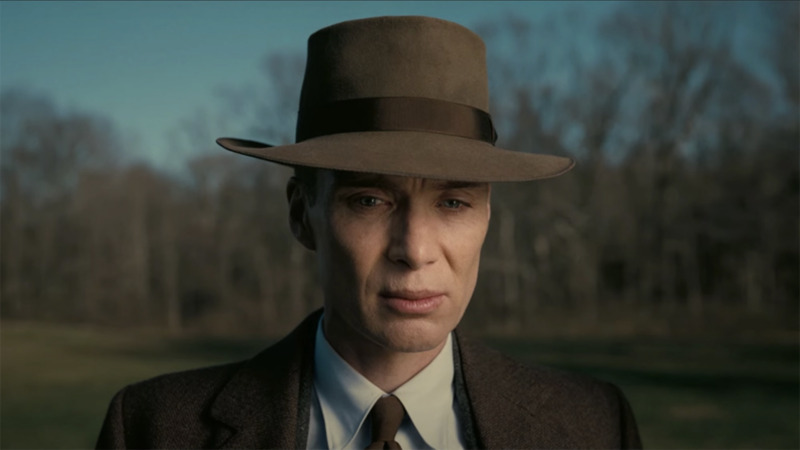“Oppenheimer”: A Masterpiece of Historical Cinema
A Review of Oppenheimer
(By Carmichael Phillips)

“Oppenheimer,” directed by Christopher Nolan, is a cinematic tour de force that delves deep into the life and complex legacy of J. Robert Oppenheimer, the brilliant scientist who played a pivotal role in the development of the atomic bomb during World War II. This biographical drama combines stellar performances, impeccable storytelling, and breathtaking visuals to deliver a thought-provoking and emotionally charged cinematic experience.
A Glimpse into History
The film begins with Oppenheimer’s early career as a physicist and his involvement in the top-secret Manhattan Project, which aimed to create the world’s first atomic bomb. Cillian Murphy’s portrayal of Oppenheimer is nothing short of mesmerizing, capturing the scientist’s intellectual brilliance and inner turmoil. Murphy’s nuanced performance takes viewers on a journey through Oppenheimer’s moral dilemmas and the weight of his scientific achievements.
The Ensemble Cast
“Oppenheimer” boasts an ensemble cast that delivers standout performances. Emily Blunt shines as Katherine “Kitty” Puening, Oppenheimer’s wife, providing depth to the character and adding emotional resonance to the film. Notable supporting roles by actors like Tom Hardy, who plays fellow physicist Richard Feynman, and Marion Cotillard as Jean Tatlock, Oppenheimer’s confidante, round out the stellar cast.
Nolan’s Signature Storytelling
Christopher Nolan’s direction and storytelling prowess are on full display in “Oppenheimer.” The film’s non-linear narrative weaves together multiple timelines, allowing viewers to explore Oppenheimer’s life from different angles. Nolan’s signature use of time manipulation creates a sense of suspense and intellectual engagement, keeping the audience captivated throughout.
Visual Spectacle
As expected from a Nolan film, “Oppenheimer” offers breathtaking visuals that complement the narrative. Cinematographer Hoyte van Hoytema’s work is nothing short of stunning, capturing the vast landscapes of Los Alamos, New Mexico, and the intricacies of the scientific experiments. The film’s visual effects are seamless, particularly in scenes depicting the explosive power of the atomic bomb.
A Moral and Ethical Exploration
At its core, “Oppenheimer” is a profound exploration of the moral and ethical dilemmas faced by scientists involved in the Manhattan Project. The film invites viewers to contemplate the consequences of scientific discovery and the ethical implications of using such devastating power. It challenges the audience to grapple with the moral gray areas of science and wartime decision-making.
A Timeless Relevance
While “Oppenheimer” is firmly rooted in historical events, its themes are timeless. It prompts viewers to reflect on the role of science, power, and responsibility in the modern world, especially in an era where technological advancements continue to raise ethical questions.
“Oppenheimer” is an exceptional cinematic achievement that combines outstanding performances, innovative storytelling, and stunning visuals. Christopher Nolan’s direction, coupled with Cillian Murphy’s brilliant portrayal of J. Robert Oppenheimer, creates a powerful and thought-provoking cinematic experience. The film not only delves into a crucial chapter of history but also raises pertinent ethical questions that resonate with contemporary audiences. “Oppenheimer” is, without a doubt, a masterpiece of historical cinema that deserves recognition and praise.



